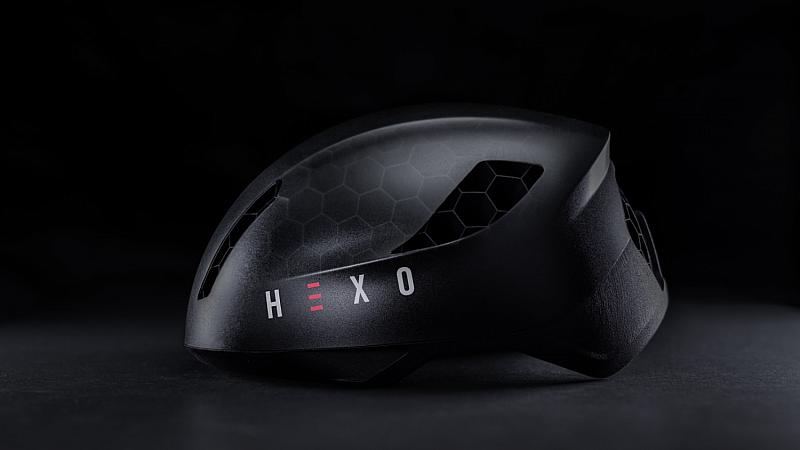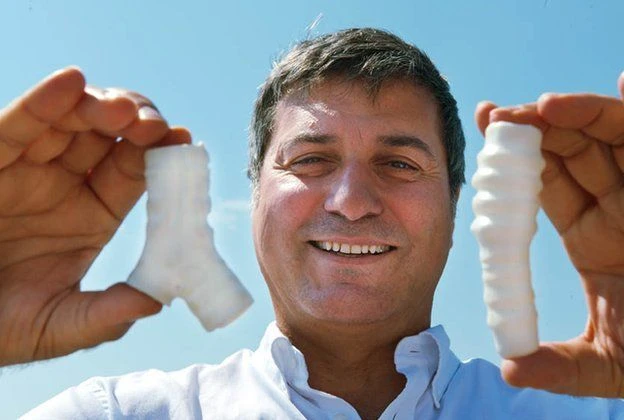
Every Hexr helmet is a one off – made to the precise dimensions and curvature of your head, based on a 30,000 point scan.
This week’s My Startup is all about a company who has created the world’s first 3D printed helmet.
Combining cutting-edge technology and material science, Hexr brings to the market a helmet that can control impact 68% better than all other cycling helmets.
As such, it’s a safer, better fit, environmentally friendly customisable bike helmet.
The main inner shell structure is made from 100% renewable raw materials, using oil from castor beans.
They’re the first company to move away from foam – revolutionary step in the technology of cycle helmets.
Founder: Jamie Cook
Founded: 2018
Website: hexr.com
We spoke to Jamie to find out more about the specialist sports headwear.
Why did you start Hexr Helmets? What motivated you?
I was a Mechanical Engineering undergraduate student in London, and became fascinated with materials and designing physical products.
I was spending a lot of time on my bike and witnessed some horrific crashes in London. It got me thinking about bike helmets.
Having an interest in materials, I had become aware that almost all bike helmets are made with expanded polystyrene (EPS) foam – which was designed for flat packaging in the 1960s, not shock absorption.
I started to do research and my initial results were a catalyst to dedicating the next four years at the University of Oxford looking at energy absorption design.
I found that by using honeycomb structures, you can double the effectiveness of the helmet versus a standard EPS foam helmet.
This kind of design wasn’t really possible before because you really need 3D printing manufacturing to do it, and before now it was far too expensive to use 3D printing for a consumer product.
So, I started Hexr because I know that we should be using different designs for helmets and with 3D printing growing, the time was now.
Where are you at right now?
We are in final product refinement with some pro athletes, working to a shipping date in May. We are also hiring right now which feels awesome to be building out the team further.
What are your aims for the next year?
The aim is first and foremost to deliver an amazing product to our first customers.
Everything else is secondary to that. Once we smash that, our focus is to build a brilliant team, and expand our scanning network so that we are available wider than London.
We’ve had people travelling from all over the UK to get their head scanned so we want to make this easier and more local!
What’s been the hardest thing about getting Hexr off the ground?
We are developing an industry first on pretty much every front; 3D scanning, 3D printing and bespoke customisation.
This is one of those truly innovative products which is complex to bring it all together, so nothing has been straightforward.
The most challenging piece has probably been the final product refinement.
We are fanatical about detail and as this is our first foray into the market, we care that everything is incredibly high quality.
That means we’ve gone back to the drawing board thousands of times on the design, worked into the night on small touches, just to ensure it’s all thought about.
It will be worth it thought.
Why should more cyclists be using these helmets?
There are a lot of strong credentials. Firstly, it fits like a dream, easily the most comfortable helmet you can find as it’s created for your head.
It is so light you almost forget you’re wearing it, due to perfect fit eliminating any potential pressure points.
As it is made for your exact head-shape we have been able to lower the overall size, so its sleeker than other helmets – goodbye mushroom head.
This also makes it super aerodynamic.
It is safer by using this honeycomb, we are able to over double the energy absorption making it safer than traditional helmets.
Finally, we use 100% bio sustainable materials which is much better for our planet than polystyrene foam.
How much will it cost for customers? – and why is it worth the investment?
£349 and there’s simply nothing like it on the market. If you want something that helps to provide the perfect ride, is completely custom to you and gives you the confidence of greater protection – it is worth it.





